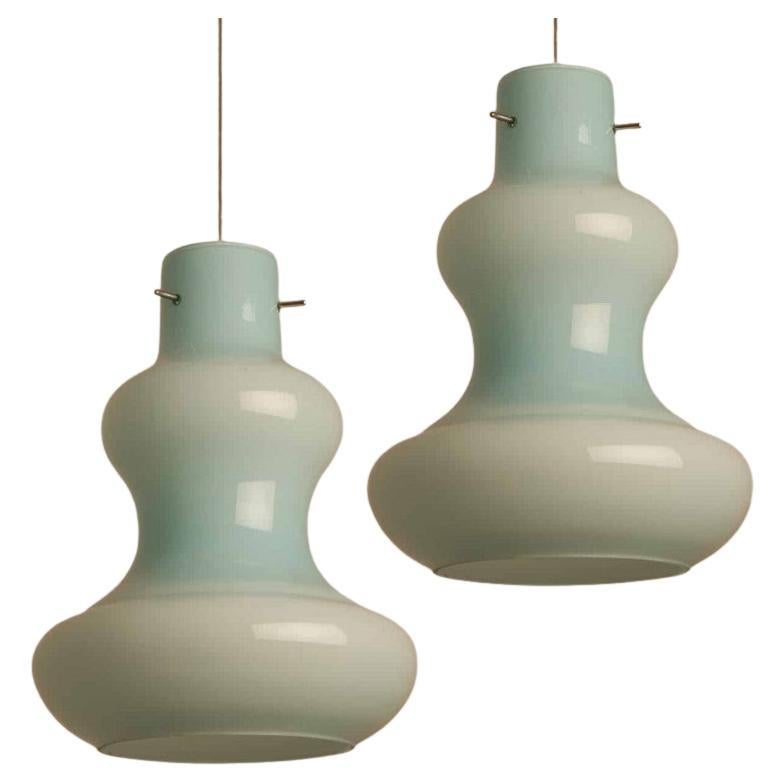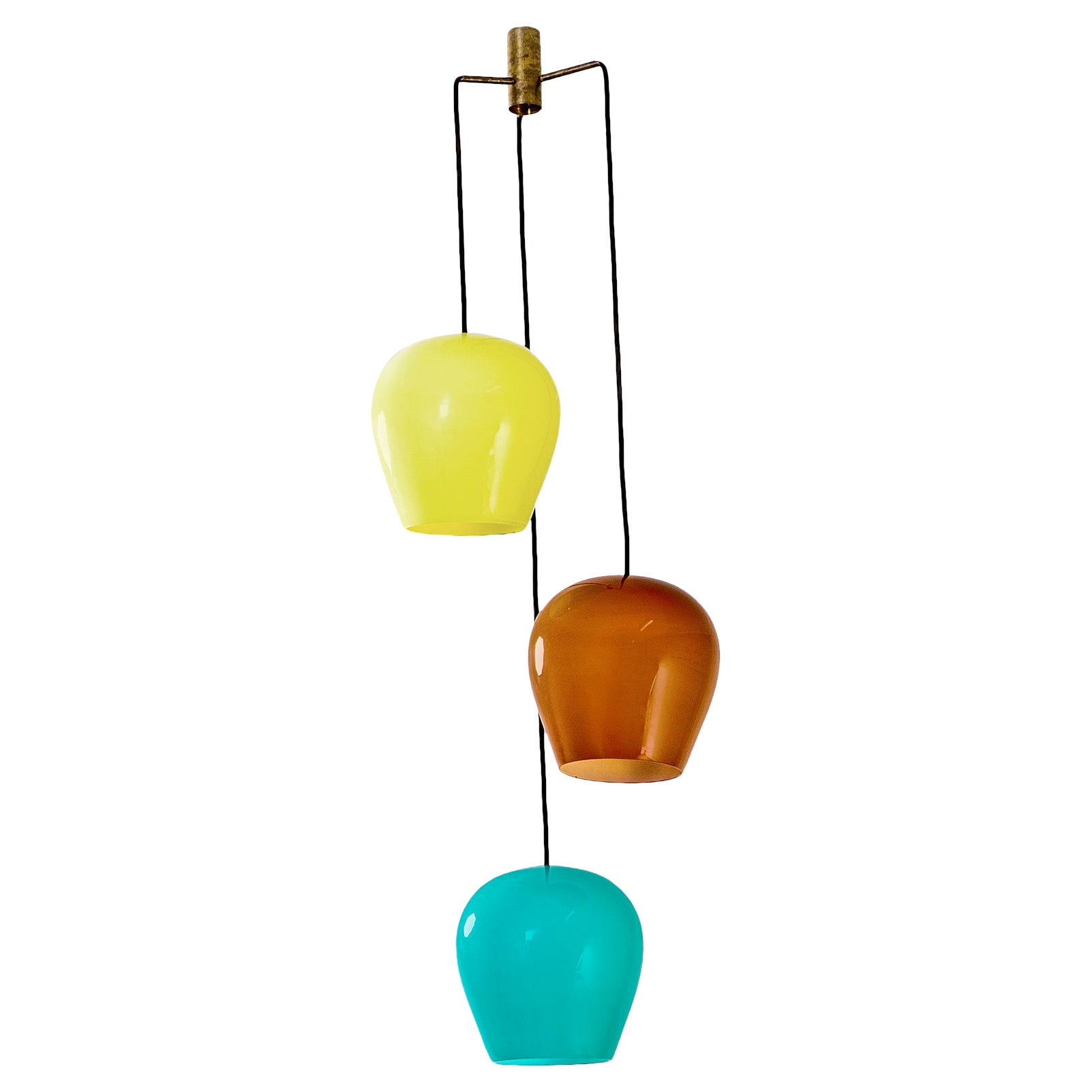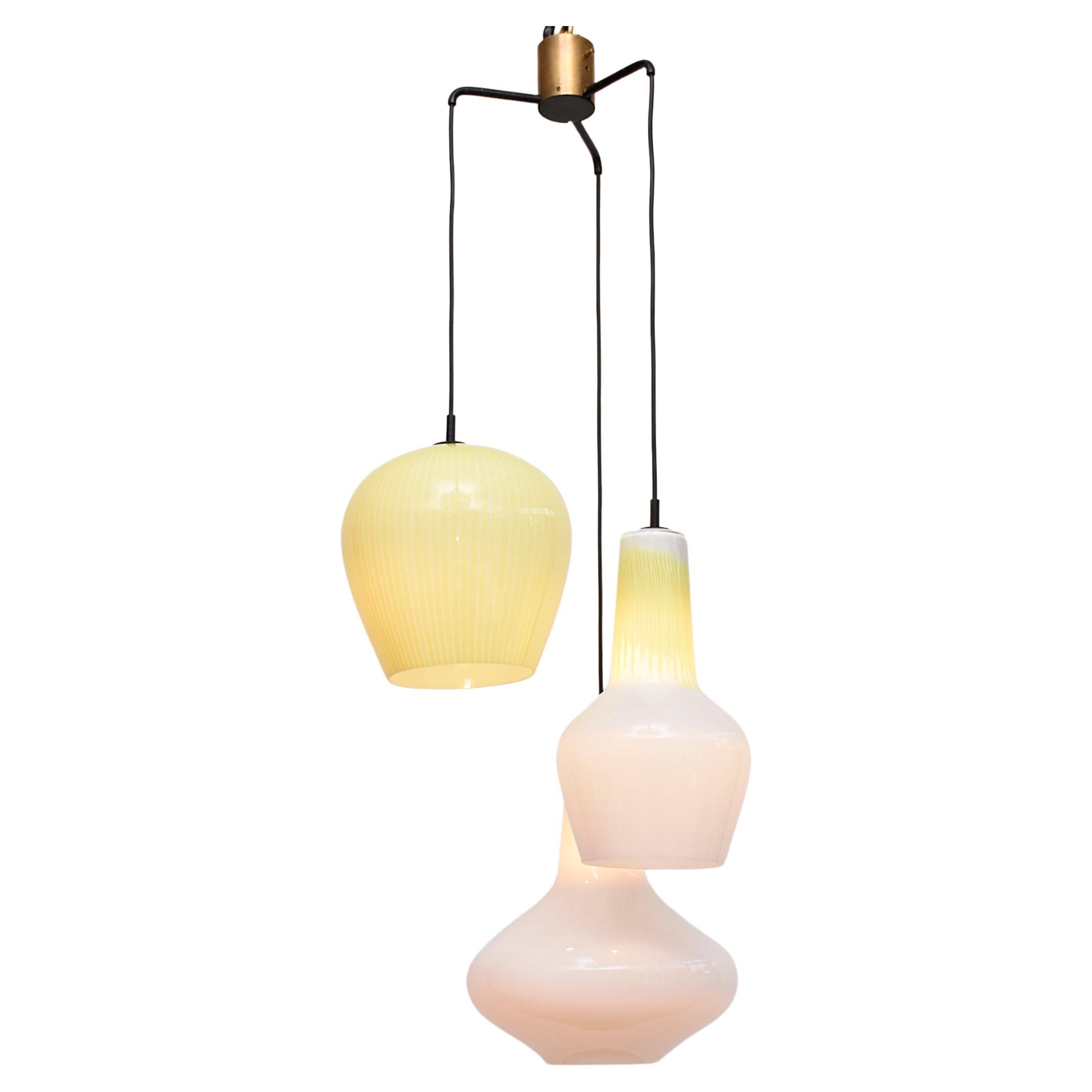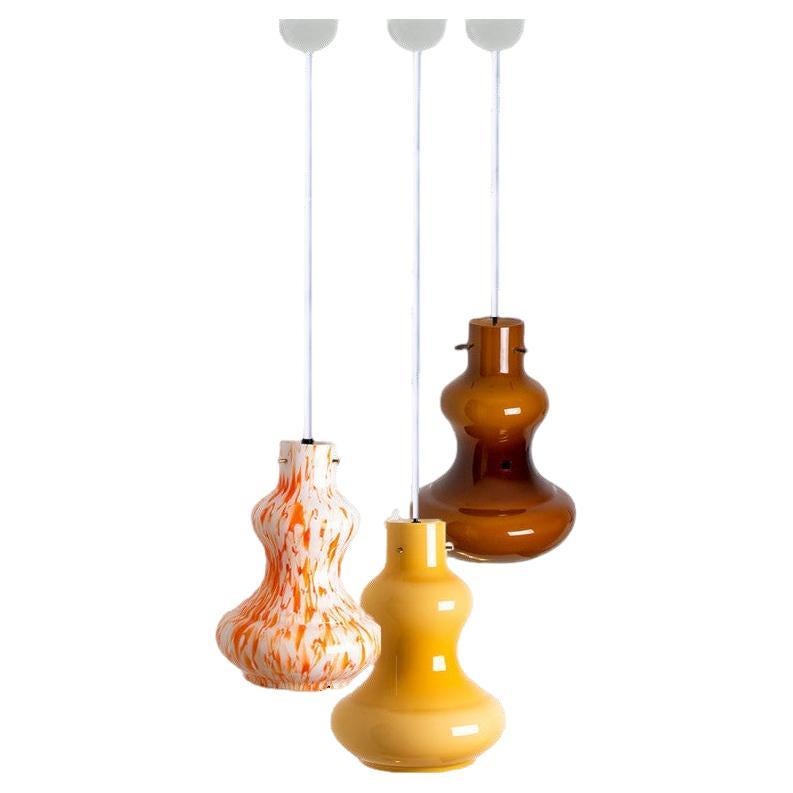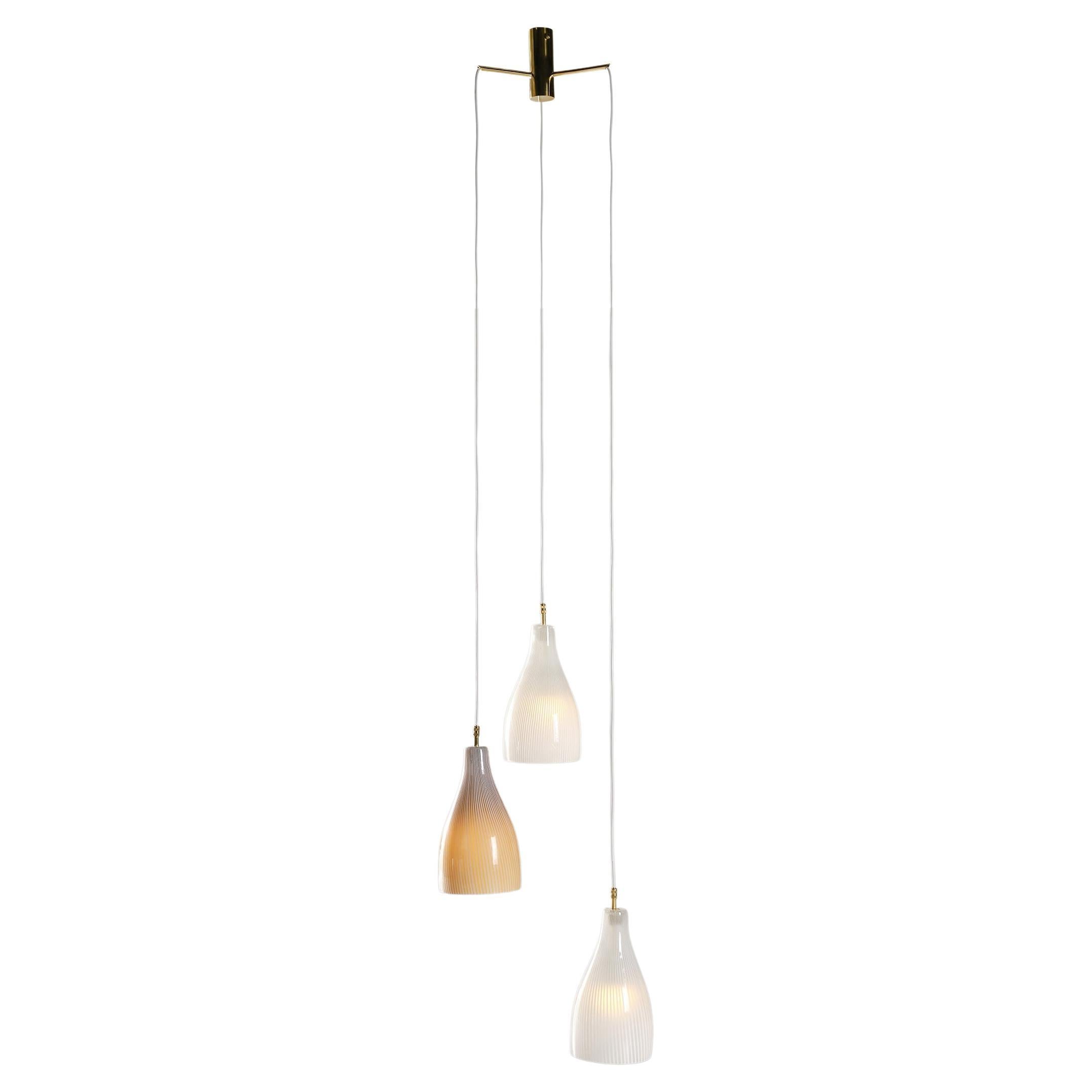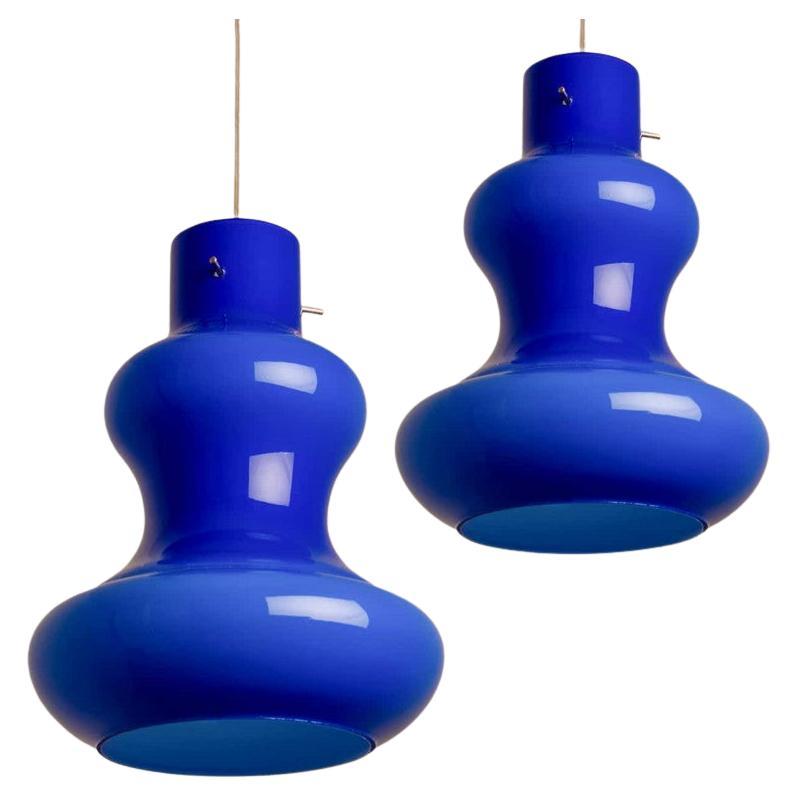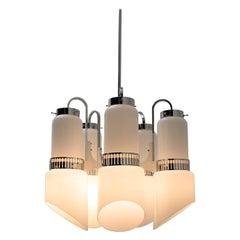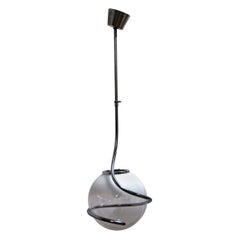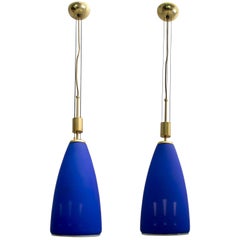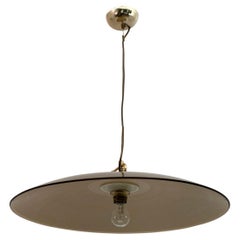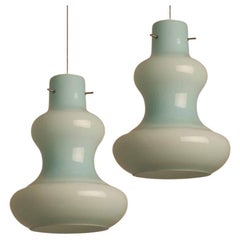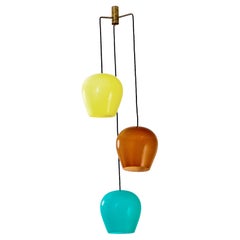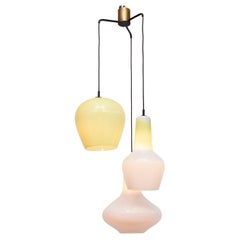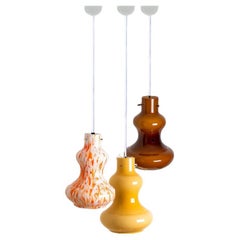Items Similar to Mid-century Modern Murano Glass Pendants, 60s Pair, Vistosi
Want more images or videos?
Request additional images or videos from the seller
1 of 8
Mid-century Modern Murano Glass Pendants, 60s Pair, Vistosi
$1,904.77per set
£1,415.76per set
€1,600per set
CA$2,629.96per set
A$2,916.44per set
CHF 1,532.37per set
MX$35,633.90per set
NOK 19,172.05per set
SEK 17,996.25per set
DKK 12,183.20per set
About the Item
Pair of pendant lamps design attributed to Vistosi glassworks in the 1960s, made of cased Murano glass. It has a beautiful bright yellow color and produces different shades of yellow when lit.
The indicated size refers to the glass only, without the power cables.
Fits US E27/E26 lamp holders.
- Attributed to:Vistosi (Manufacturer)
- Dimensions:Height: 11.82 in (30 cm)Diameter: 8.67 in (22 cm)
- Sold As:Set of 2
- Power Source:Hardwired
- Voltage:220-240v,110-150v
- Style:Mid-Century Modern (Of the Period)
- Materials and Techniques:
- Place of Origin:
- Period:
- Date of Manufacture:1960
- Condition:
- Seller Location:Puglia, IT
- Reference Number:1stDibs: LU4426137876722
About the Seller
5.0
Platinum Seller
Premium sellers with a 4.7+ rating and 24-hour response times
Established in 2000
1stDibs seller since 2019
602 sales on 1stDibs
Typical response time: <1 hour
- ShippingRetrieving quote...Shipping from: Puglia, Italy
- Return Policy
Authenticity Guarantee
In the unlikely event there’s an issue with an item’s authenticity, contact us within 1 year for a full refund. DetailsMoney-Back Guarantee
If your item is not as described, is damaged in transit, or does not arrive, contact us within 7 days for a full refund. Details24-Hour Cancellation
You have a 24-hour grace period in which to reconsider your purchase, with no questions asked.Vetted Professional Sellers
Our world-class sellers must adhere to strict standards for service and quality, maintaining the integrity of our listings.Price-Match Guarantee
If you find that a seller listed the same item for a lower price elsewhere, we’ll match it.Trusted Global Delivery
Our best-in-class carrier network provides specialized shipping options worldwide, including custom delivery.More From This Seller
View AllVistosi Midcentury Italian Murano Glass and Steel "Incamiciato" Chandelier, 60s
By Vistosi
Located in Puglia, Puglia
This imposing Italian chandelier was produced by the iconic company Vistosi, in the 1960s, the Murano glass cylinders are inside and outside in transparent glass and in the center in...
Category
Vintage 1960s Italian Mid-Century Modern Chandeliers and Pendants
Materials
Steel
Fabio Lenci Mid-Century Modern Italian Murano Glass Pendant by Guzzini, 1970
By Guzzini, Fabio Lenci
Located in Puglia, Puglia
This Murano glass and chromed metal ceiling lamp was designed by Fabio Lenci for Guzzini in the 1970s.
Category
Vintage 1970s Italian Mid-Century Modern Chandeliers and Pendants
Materials
Chrome
Two Lamiprogetti Italian Murano Glass and Brass Pendants Light "Asia", 1980s
Located in Puglia, Puglia
This pair of pendants light were created by Lamiprogetti in the 1980s, made of jacketed Murano glass, the structure is made of brass and has a system of salts and internal light desc...
Category
Vintage 1980s Italian Modern Chandeliers and Pendants
Materials
Brass
Mid-Century Modern Italian Murano Glass Pendant Lamp Murano, 1970s
Located in Puglia, Puglia
Suspension lamp in bronzed Murano glass, with brass details.
Category
Vintage 1970s Italian Mid-Century Modern Chandeliers and Pendants
Materials
Brass
Attributed to AV Mazzega Mid-Century Modern Italian Murano Glass Pendant, 1970s
By AVMazzega
Located in Puglia, Puglia
This pendant lamp features a transparent Murano blown glass bell-shaped lampshade with blue, black and brown Murrine decoration. Equipped with a lamp holder with E27 connection for E...
Category
Vintage 1970s Italian Mid-Century Modern Chandeliers and Pendants
Materials
Steel
Mid-Century Modern Italian Murano Bubbles Glass Pendant Lamp, 1970s
By Maestri Muranesi
Located in Puglia, Puglia
Suspension lamp in blown Murano glass with air bubbles, composed of two parts, underlying spiral and smooth upper part.
Category
Vintage 1970s Italian Mid-Century Modern Chandeliers and Pendants
Materials
Brass
You May Also Like
Set of 2 Mint Murano Glass Pendant Lights by Massimo Vignelli for Venini, 1960
By Massimo Vignelli, Venini
Located in Rijssen, NL
A beautiful and unique set of mint green glass pendant lights, made in the 1960s by Massimo Vignelli for Venini.
The lampshade is made of blue/green opaline glass with an inner white...
Category
Vintage 1960s Italian Modern Chandeliers and Pendants
Materials
Blown Glass, Murano Glass, Opaline Glass
20th Century Massimo Vignelli for Venini Pendant Lamp
By Massimo Vignelli, Venini
Located in Turin, Turin
Massimo Vignelli (1931- 2014) was an Italian designer.
During his very long career, always supported by his wife Lella, Massimo Vignelli has dealt with various branches of design. T...
Category
Vintage 1950s Italian Mid-Century Modern Chandeliers and Pendants
Materials
Brass
Mid-century Murano glass light pendant by Massimo Vignelli
By Massimo Vignelli
Located in SON EN BREUGEL, NL
A mid-century original Italian pendant by Massimo Vignelli for Venini Murano.
With 3 hand blown coloured and white Murano glass pendants and polished brass.
The lamp gives a nice dif...
Category
Mid-20th Century Italian Mid-Century Modern Chandeliers and Pendants
Materials
Brass
1 of the 3 Murano Glass Pendant Lights by Massimo Vignelli for Venini, 1960
By Massimo Vignelli
Located in Rijssen, NL
1 of the 3 pendant lights, made in the 1960s by Massimo Vignelli for Venini.
The set contains a yellow, orange/white and brown pendant.
The lampshades are made of opaline glass with ...
Category
Mid-20th Century Italian Modern Chandeliers and Pendants
Materials
Glass, Opaline Glass
Massimo Vignelli for Venini Murano Pendant Glass Lamp, 1960s
By Massimo Vignelli, Venini
Located in Milan, IT
This mid-century pendant lamp was designed by Massimo Vignelli for Venini in the 1960s and features 3 exceptionally refined Murano glass diffusers mounted on a brass structure.
Category
Vintage 1960s Italian Mid-Century Modern Chandeliers and Pendants
Materials
Metal, Brass
Set of 2 Cobalt Murano Glass Pendant Lights by Massimo Vignelli for Venini, 1960
By Massimo Vignelli, Venini
Located in Rijssen, NL
A beautiful and unique set of cobalt blue glass pendant lights, made in the 1960s by Massimo Vignelli for Venini.
The lampshade is made of blue opaline glass with an inner white glaz...
Category
Vintage 1960s Italian Modern Chandeliers and Pendants
Materials
Blown Glass, Murano Glass, Opaline Glass
More Ways To Browse
Retro 60s Lamp Shades
Venini Sputnik Chandelier
Victorian Canopy
Vintage Holophane Glass Shade
Wood Pendant Light Danish
18 Arm Chandelier
18th Century Brass Chandeliers
5 Tier Murano Glass Chandelier
Amber Glass Cups
Amber Glass Door
Aqua Pendant Light
Capiz Lighting
Ceiling Light 6 Arm
Crystal Dome Chandelier
French Wood Gilt Chandelier
Fringed Ceiling Light
Gilt Bronze Rococo Chandelier
Globes Raak
